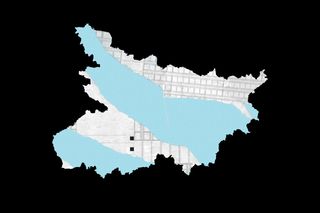
The Bihar Caste Census Affirms Need for Increasing Caste‑Based Reservations
According to the findings, OBC and EBC groups make up 63% of the total population.

On Monday, Bihar released the results of its caste census, which experts expect will have far-reaching impacts on national politics. According to the findings, Bihar’s population stands at 13.1 crore, of which 36% belong to Extremely Backward Classes (EBC), 27.1% to Other Backward Classes (OBC), and 19.7% to Scheduled Castes (SC), reported NDTV. Together, the OBC and EBC population account for 63% of the total population while the rest of the population, comprising Savarna castes, stands at 15.5%.
The report, titled Bihar Jaati Adharit Ganana, focused on 17 socio-economic indicators, including caste, and also included a percentage-wise breakup of sub-castes. Of the OBC group, for instance, Yadavs make up 14.26% and are the largest group in the state. Further, Hindus comprise an estimated 82% of the total population, while Muslims make up 17.7%. According to The Hindu, the Bihar government clarified after the report’s release that “it’s only a compiled data and no analysis of it has been done yet.”
The results of the survey reaffirm what anti-caste activists and scholars have long been highlighting – that the OBC population in the country far exceeds the 27% reservation earmarked for this group. In fact, the Mandal Commission’s 1980 report had estimated, based on the 1931 census data, that the OBC population makes up 52% of the country’s population. Bihar’s caste survey results, therefore, reflect the continued need for affirmative action, which has long formed the locus of vote bank politics and has been mired in merit-based arguments that often refuse to acknowledge the intersectional nature of social justice and welfare reforms. It also underscores why many caste-based communities, including OBC groups, and anti-caste activists have been demanding a nation-wide caste-based census. They believe that these numbers will help frame developmental policies and ensure the benefits are reaching those they are meant for.
But the caste-based census has been a contentious political issue in India with a long history. While caste was included in the census until 1931, every census in India from 1951 to 2011 has included data on SCs and STs, but not on other castes. “In the absence of such a census, there is no proper estimate for the population of OBCs, various groups within the OBCs, and others,” reported The Indian Express. As anti-caste scholars have highlighted, this data is essential to frame welfare policies for marginalized communities and understand the extent to which wealth and power remain consolidated in the hands of upper castes. As rallying cries for a caste-based census continued, caste data was collected under the Socio Economic Caste Census (SECC) in 2011, but it was not released publicly, with flawed data being cited as the reason.
Related on The Swaddle:
Census 2021 Will Not Include Caste‑Wise Data Despite Demands From Activists, Politicians
Journalist Tejas Harad noted that there are two main arguments at play against the inclusion of caste in the census. The first is logistical, claiming that it is almost impossible to collect caste data, that enumerators are ill-equipped to handle the complexities of caste, and that there is no mechanism to objectively analyze caste. This is an argument, Harad adds, that does not justify avoiding data collection. The second is ideological in nature: “…that the census will solidify caste identities, which goes against the goal of annihilation of castes.”
“The argument that caste enumeration will make castes rigid is similarly unconvincing,” Harad wrote in 2018. “Though caste as a mobilising force is playing an increased role in politics, these mobilisations are taking place around multi-caste blocs such as Dalit, Pasmanda, OBC, etc. When multi-caste alliances come under one umbrella for their shared demands, it poses a serious challenge to the caste system. It defies the logic of caste system which says that no two castes can share a feeling of solidarity because of the in-built superiority/inferiority.”
Bihar’s caste survey too was hurdled by opposition, including a legal challenge in the Patna High Court that the survey violated people’s right to privacy and that the state did not have the power to carry out such a survey. While the Patna HC had initially stayed the survey, it later ruled that the survey was “valid.”
Experts told The Hindu that the state’s census results could pave the way to challenge the 50% cap on reservations in jobs and educational institutions. In 1990, the Union Government had accepted the Mandal Commission’s recommendations and extended reservations to OBC groups. However, a 1992 Supreme Court judgment, in the precedent-setting Indira Sawhney vs. Union of India case, had capped reservations at 50%. Since then, there has been growing pressure against this ceiling limit that highlights how the cap is incongruent with the on-ground reality. Shoaib Daniyal wrote, “Not only was there no legal justification for this 50% figure, there was little social justification for this, given that the proportion of upper castes in India is certainly far less than 50%. The system of reservations – seminal to wiping out caste apartheid – needs to be based on actual ground data not arbitrary caps.”
Bihar Chief Minister Nitish Kumar had earlier also called for this cap to be removed: “The cap is depriving OBCs [Other Backward Classes] and EBCs [Extremely Backward Classes] of opportunities in proportion to their population.”
While demands for OBC enumeration have been raised time and again, and commissions – including the National Commission for Backward Classes (NCBC) – have been set up to look into OBC representation, the issue of OBC reservations has emerged as a layered and complex one.
The problem arises when the OBC bloc is viewed as a homogenous, monolithic group, diluting the experiences of different castes and religions that fall within the larger OBC umbrella. While writing about Maharashtra politics and OBC reservations, Yashwant Zagade wrote, “Given the heterogeneity, OBCs are stratified along caste lines following an inward-looking each-caste-for-itself approach. Due to this notion in recent times the artisan, service giving and nomadic castes are strongly demanding quotas within the quotas. Further, the smaller OBC castes continue to remain at the margin and feel that all the benefits are being monopolised by the numerically dominant OBC castes.”
Related on The Swaddle:
Healing the Trauma of Caste, With Thenmozhi Soundararajan
Over the years, calls for OBC status and reservations have also emerged from what Alok Prasanna Kumar calls the “middle castes” – such as the Patels in Gujarat or the Marathas in Maharashtra. States’ attempts at instituting reservations for these groups have been struck down primarily for exceeding the 50% reservation limit. “Whichever community wants to demand a different status should be allowed to — they have a right to demand. But we need to know if their demand is justifiable, and that’s why we need numbers,” said G. Karunanidhy, General Secretary of the All India OBC Federation.
Whether the responsibility of enumerating castes falls upon the Centre or the states has been another issue. In 1961, the Union government gave states the rights to maintain their own OBC lists based on their definition of “backwardness.” But, in 2021, while striking down separate quotas for Marathas in Maharashtra, the Supreme Court dealt a severe blow to states’ powers to determine OBC groups and enact reservations. The SC had ruled that, as per the 102nd Constitutional Amendment Act, 2018, only the Centre could notify socially and educationally backward classes. At the time, Disha Wadekar and Ravikant Kisana wrote, “The decision undermines the federal distribution of powers between the centre and the states in identifying OBCs, which is particularly tragic given the progressive role states have played in ensuring OBC rights. It also endangers the status of several communities that are identified as OBC by states, but not by the centre.”
Then, in August 2021, the Centre introduced the 127th Constitutional Amendment Bill, overturning the Supreme Court’s decision. “The amendment is necessary to restore the powers of the state governments to maintain their list of OBCs which was taken away by a Supreme Court interpretation of Constitution (102) Amendment Act… If the state list was abolished, nearly 671 OBC communities would have lost access to reservation in educational institutions and in appointments one fifth of the community would have been impacted,’’ a government official told The Hindustan Times.
The opposition to the caste-based census also emerges from a certain degree of what Satish Deshpande calls “caste-blindedness.” Desphande highlighted that policy-making in post-Independence India suffered from conflicting policies of social justice and “caste-blindedness.” “As a consequence, the privileged upper castes are enabled to think of themselves as “casteless,” while the disprivileged lower castes are forced to intensify their caste identities.” Sandeep Saurav, CPI-ML MLA from Bihar, noted, “The caste-based census would make sure that everybody’s caste be counted and that the privileged sections of the upper castes lose the advantage of anonymity and their facetious claims of being casteless while enjoying the privileges such as inherited wealth and access to education would come crashing down… The caste-based census would make acknowledgement of the presence and impact of the systemic deprivation the caste structure has inflicted upon the citizens even more glaring. ”
Now, in the aftermath of Bihar’s caste-based survey, opposition parties in Uttar Pradesh and Madhya Pradesh have called for similar exercises in their states, while demands for a nation-wide caste-based census have also gained momentum. Meanwhile, Prime Minister Narendra Modi – without mentioning the survey – reportedly said that the opposition is “trying to divide the country in the name of caste,” hours after the Bihar government released the survey’s findings.
While the caste-based census seems to be inseparable from electoral politics, Bihar’s census findings also provide an opportunity to ensure quotas accurately reflect the realities of caste on-ground and address historical injustices for marginalized communities.
Related


Saving the World Like a Savarna
.jpg?rect=0,80,1280,1280&w=320&h=320&fit=min&auto=format)